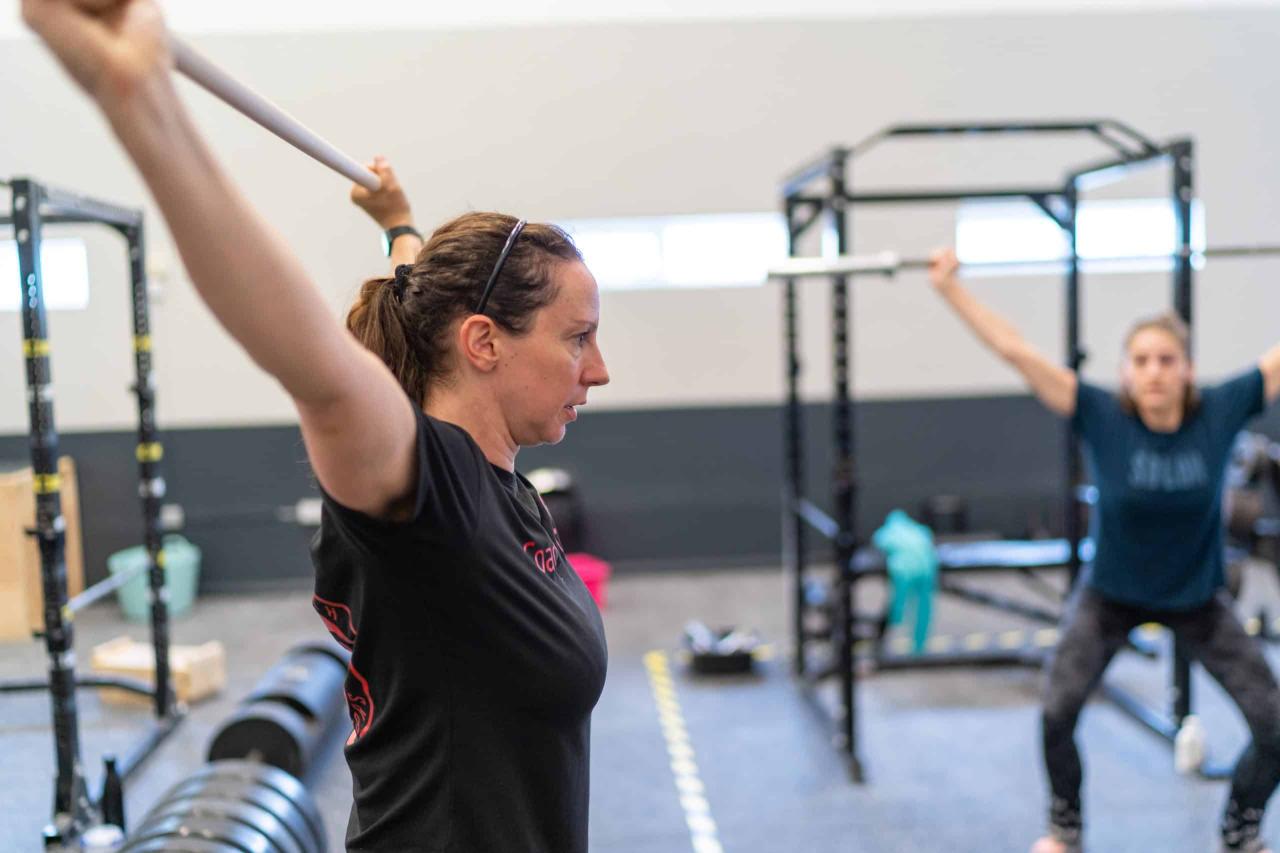Most effective weight training exercises for building upper body strength: Forget flimsy arm workouts! This isn’t about delicate flower-arranging; this is about forging steel biceps and shoulders that could rival a Greek god’s. We’re diving deep into the world of compound and isolation exercises, exploring the best ways to sculpt your upper body into a masterpiece of muscle and might.
Prepare for a journey into the gym, where sweat equity pays off in serious strength gains.
We’ll cover everything from the king of lifts (the bench press, naturally) to the often-overlooked heroes of hypertrophy (hello, lateral raises!). We’ll dissect proper form, explore different training styles, and even spill the secrets to a nutrition plan that fuels your gains. Get ready to transform your upper body from “meh” to “marvelous!”
Introduction to Upper Body Strength Training
So you want to sculpt a physique that would make Michelangelo weep with envy? Excellent! Building upper body strength isn’t just about looking good – it’s about feeling powerful, improving your everyday life, and maybe even impressing that barista who keeps making your latte art suspiciously phallic. But before you start tossing around weights like a caffeinated chimpanzee, let’s talk about the fundamentals.Proper form is paramount.
Think of your body as a finely tuned sports car – a Ferrari, if you will. Ignoring proper form is like trying to drive that Ferrari while simultaneously juggling chainsaws and reciting Shakespeare. It’s inefficient, dangerous, and highly likely to end in tears (and possibly a trip to the chiropractor). Mastering proper form ensures you’re working the intended muscles, preventing injuries, and maximizing your gains.
This means focusing on controlled movements, maintaining a stable core, and avoiding momentum-based cheating. Remember, slow and steady wins the race – or at least, the gains.
The Importance of Compound and Isolation Exercises
Compound exercises, like bench presses, overhead presses, and rows, work multiple muscle groups simultaneously, building a solid foundation of overall strength. Think of them as the heavy-lifting workhorses of your upper body workout. Isolation exercises, on the other hand, target individual muscles, allowing for more focused development and sculpting. Bicep curls, triceps extensions, and lateral raises are prime examples.
Combining both types creates a well-rounded approach, building both strength and definition – the best of both worlds! It’s like baking a cake: you need the basic ingredients (compound exercises) and then the special touches (isolation exercises) to make it truly delicious.
Different Training Styles and Their Relevance to Upper Body Strength
Bodybuilding focuses on hypertrophy (muscle growth) through high-volume training with moderate weight and multiple sets. Think meticulously sculpted physiques. Powerlifting emphasizes maximal strength in three core lifts: squat, bench press, and deadlift. Powerlifters prioritize raw strength over sheer size. Strongman training incorporates a variety of unconventional events, requiring immense strength, endurance, and technique.
Think carrying heavy stones, flipping tires, and deadlifting cars (don’t try this at home, kids!). Each style offers a unique path to upper body strength, depending on your goals. Choosing the right style is like picking the right tool for the job – a hammer for nails, a screwdriver for screws, and a really, really big hammer for… well, you get the idea.
Compound Exercises for Upper Body Strength
Forget the bicep curls and tricep extensions for a minute – those are the dessert, not the main course! To truly build a powerful upper body, you need to embrace the mighty compound exercises. These are the moves that work multiple muscle groups simultaneously, leading to significant strength gains and overall physique improvements. Think of them as the superheroes of your workout routine.Compound exercises are incredibly efficient, maximizing your workout time and minimizing wasted effort.
Want sculpted biceps that could rival Michelangelo’s David? Then master the bench press, overhead press, and rows – they’re your upper body trifecta! But to truly unlock your inner superhero, you need a solid foundation. That’s where a killer full-body routine comes in, and I highly recommend checking out this program for beginners: best full body strength training workout program for beginners.
Once you’ve got that down, you’ll be ready to really push those upper body exercises to the max!
They also promote functional strength – the kind that translates to real-world activities like carrying groceries, lifting heavy objects, or even just gracefully avoiding a rogue toddler’s toy truck. Let’s delve into the big three: bench press, overhead press, and rows.
Benefits of Bench Press, Overhead Press, and Rows
The bench press, overhead press, and rows are the cornerstone of any serious upper body strength training program. The bench press primarily targets the chest, shoulders, and triceps, building a powerful and aesthetically pleasing upper body. The overhead press works the shoulders, triceps, and upper back, crucial for overall stability and strength. Rows, on the other hand, focus on the back muscles, improving posture and preventing imbalances.
Performing these exercises regularly results in increased muscle mass, strength, and overall fitness. The synergistic effect of these movements creates a balanced and powerful upper body.
Comparison of Barbell, Dumbbell, and Machine Variations, Most effective weight training exercises for building upper body strength
Each of these exercises can be performed with barbells, dumbbells, or machines, each offering unique advantages and disadvantages. Barbells allow for maximal weightlifting, promoting significant strength gains but demanding excellent form and stability. Dumbbells offer a greater range of motion and improved muscle activation, particularly for stabilizing muscles, but typically allow for less overall weight to be lifted. Machines provide stability and guidance, making them ideal for beginners or those focusing on isolation of specific muscles, but often limit the range of motion and overall muscle activation compared to free weights.
The choice depends on your experience level, goals, and available equipment.
Want a chest like a granite boulder and arms that could wrestle a grizzly? Then you need to explore the most effective weight training exercises for building upper body strength, which often overlap with broader categories like muscular strength exercises. Mastering those fundamental movements will transform your physique, making you the envy of all your friends (or at least, the slightly less-envious ones).
So ditch the couch and embrace the iron – your upper body will thank you!
Comparison Table of Upper Body Compound Exercises
| Exercise | Target Muscles | Equipment | Difficulty |
|---|---|---|---|
| Bench Press | Chest, Shoulders, Triceps | Barbell, Dumbbells, Machine | Intermediate |
| Overhead Press | Shoulders, Triceps, Upper Back | Barbell, Dumbbells, Machine | Intermediate |
| Rows | Back, Biceps, Forearms | Barbell, Dumbbells, Machine (e.g., seated row machine) | Intermediate |
Isolation Exercises for Upper Body Strength
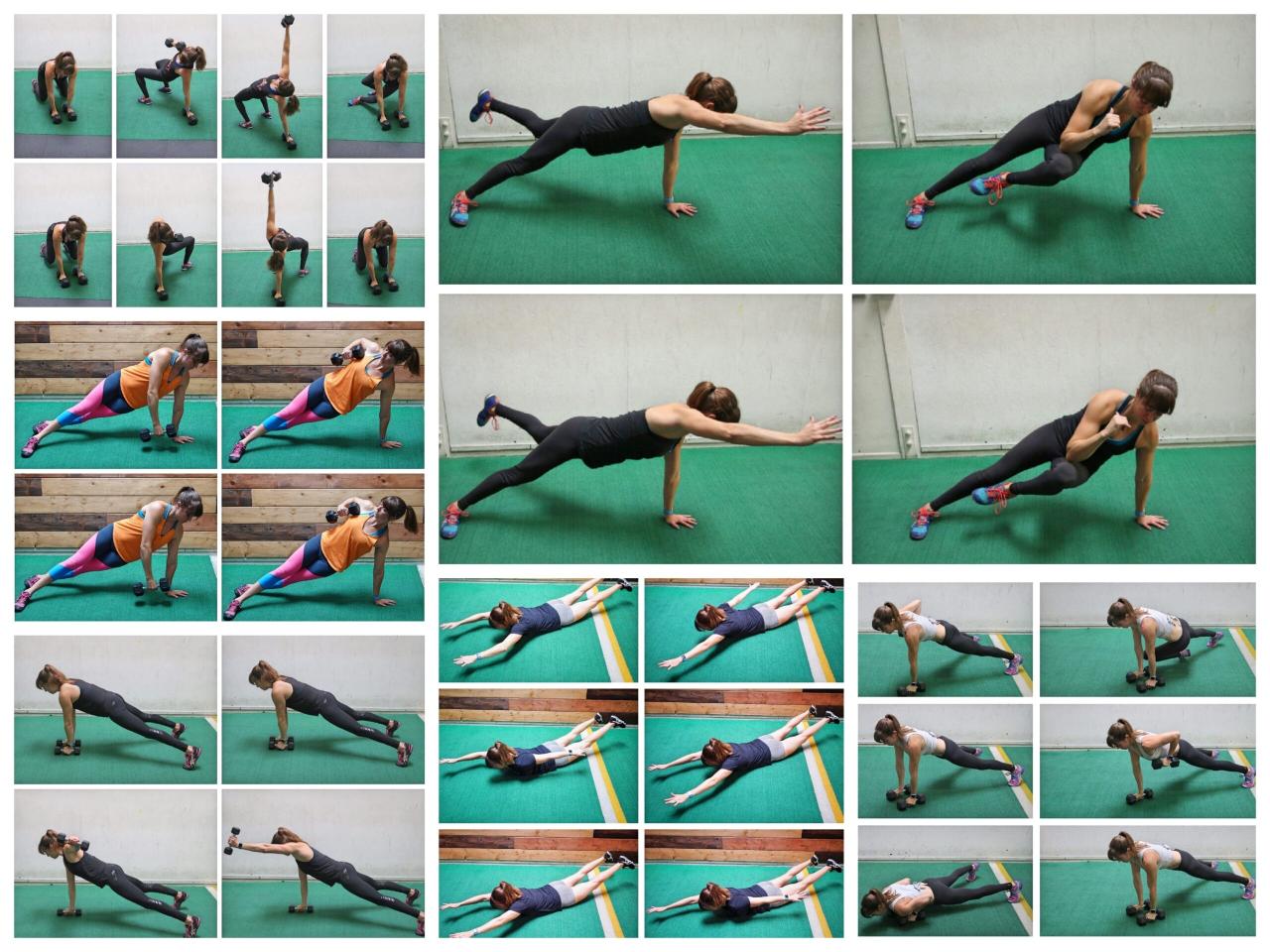
So, you’ve conquered the compound lifts, the heavy hitters of the upper body world. Your chest is puffed, your back is broad, and your shoulders are… well, they’re starting to look pretty darn good. But to truly sculpt your physique into a masterpiece, you need to bring in the precision instruments: isolation exercises. Think of compound movements as the broad brushstrokes, and isolation exercises as the fine detail work.
They’re crucial for hitting those stubborn muscle groups and achieving that final level of definition and strength.Isolation exercises focus on one specific muscle group at a time, allowing for greater control and intensity. This targeted approach is essential for maximizing muscle growth and strength in areas that might lag behind during compound movements. While compound exercises build a solid foundation, isolation exercises help you chisel away at those finer details, creating a truly impressive and well-rounded physique.
It’s like building a house; the compound exercises lay the foundation and walls, while the isolation exercises add the finishing touches, the trim, and the crown molding.
Bicep Curls: Variations and Muscle Activation
Bicep curls, the quintessential arm exercise, primarily target the biceps brachii muscle, with some involvement from the brachialis and brachioradialis muscles. Variations in grip, weight, and execution can shift the emphasis slightly. For example, hammer curls (palms facing each other) engage the brachialis more, leading to a more rounded bicep peak. Concentration curls, performed while seated and focusing on controlled movement, isolate the biceps even further.
Conversely, using a wider grip during barbell curls can emphasize the outer head of the biceps, while a closer grip targets the inner head. Think of it as sculpting your biceps – each variation chisels a different facet.
Triceps Extensions: Targeting Triceps Heads
The triceps brachii muscle, the powerhouse of the back of your upper arm, is composed of three heads: the long head, medial head, and lateral head. Different triceps extension variations emphasize these heads differently. Overhead dumbbell extensions, for instance, strongly activate the long head, while close-grip bench press variations hit all three heads with a significant emphasis on the lateral head.
Skullcrushers (lying triceps extensions) are another excellent choice, again targeting all three heads, but with a slightly different emphasis compared to the close-grip bench press. By incorporating different variations, you can ensure comprehensive triceps development, preventing imbalances and maximizing overall arm strength and size. Imagine it as a three-pronged attack on your triceps, ensuring no head is left behind.
Lateral Raises: Shoulder Sculpting
Lateral raises are your go-to exercise for building broader, more defined shoulders. The primary muscle targeted is the medial deltoid, the middle head of the deltoid muscle, responsible for that coveted width. Variations include front raises (targeting the anterior deltoid) and reverse flyes (emphasizing the posterior deltoid), creating a well-rounded shoulder development. Using dumbbells allows for a greater range of motion and independent arm movement, further isolating the targeted muscle.
So you want bulging biceps and a back like a brick wall? The most effective upper body exercises involve bench presses, rows, and overhead presses – the holy trinity of muscle growth! But if you’re feeling a bit lost in the iron jungle, check out this complete beginner’s guide to weightlifting for strength and muscle gain before you accidentally become one with the weight plates.
Then, armed with knowledge, conquer those upper body exercises and sculpt your superhero physique!
Cable lateral raises provide constant tension throughout the movement, leading to increased muscle activation. Think of it as building a strong, stable tripod of shoulder muscles, supporting and enhancing the overall look of your upper body.
Sample Upper Body Workout Routine
A balanced upper body workout should incorporate both compound and isolation exercises. Here’s a sample routine:
- Warm-up: 5 minutes of light cardio and dynamic stretching.
- Bench Press (Compound): 3 sets of 8-12 repetitions.
- Bent-Over Rows (Compound): 3 sets of 8-12 repetitions.
- Overhead Press (Compound): 3 sets of 8-12 repetitions.
- Bicep Curls (Isolation): 3 sets of 10-15 repetitions.
- Hammer Curls (Isolation): 3 sets of 10-15 repetitions.
- Triceps Extensions (Isolation): 3 sets of 10-15 repetitions.
- Lateral Raises (Isolation): 3 sets of 12-15 repetitions.
- Cool-down: 5 minutes of static stretching.
Remember to adjust the weight and repetitions based on your individual strength and fitness level. Always prioritize proper form over lifting heavier weights to prevent injuries.
Programming for Upper Body Strength
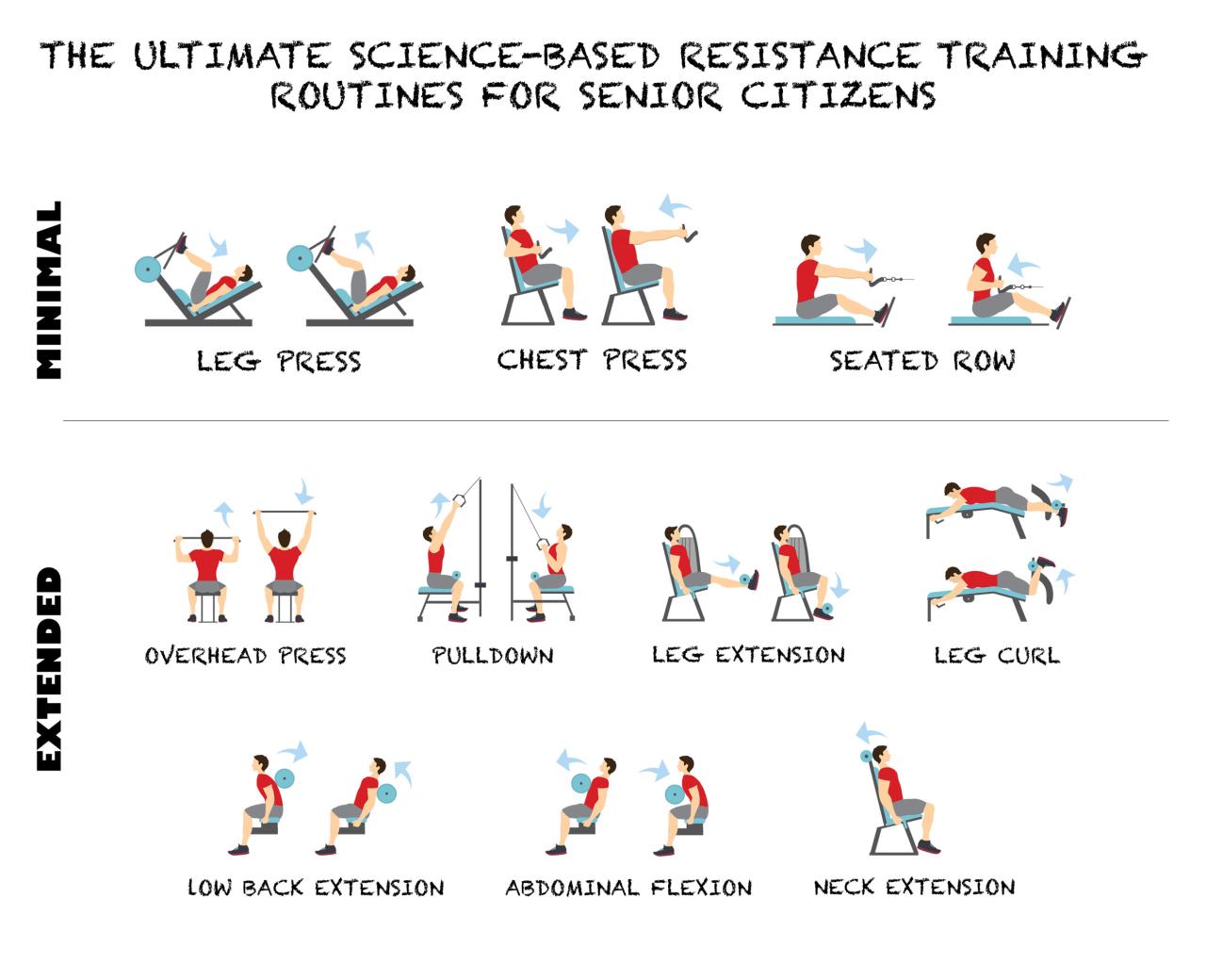
So, you’ve learned the
Want sculpted shoulders that could rival Michelangelo’s David? Then ditch the dainty dumbbells and embrace the power of bench presses and pull-ups! For a comprehensive guide that blends muscle-building with fat-burning, check out this awesome resource on top strength training exercises for women to build muscle and lose weight – it’s packed with tips to maximize your upper body gains.
Remember, ladies, strong is the new sexy, and these exercises will get you there faster than a speeding bullet (or at least a really fast bicep curl).
- what* of upper body strength training – now let’s conquer the
- how*. Programming your workouts effectively is the key to unlocking serious gains, whether you’re aiming for the Herculean strength of Atlas or the sculpted physique of a Greek god. It’s all about finding the sweet spot between pushing your limits and avoiding injury, a delicate dance of iron and intelligence.
Proper programming isn’t just about randomly picking weights and reps; it’s a strategic plan to maximize your results. We’ll delve into rep ranges, set numbers, the crucial role of progressive overload, and some popular workout splits to help you build a powerful and impressive upper body.
Rep Ranges and Set Numbers for Strength vs. Hypertrophy
The number of repetitions (reps) and sets you perform significantly influences whether you build strength or muscle mass (hypertrophy). For maximal strength gains, lower rep ranges (1-5 reps) with higher weight are ideal. This forces your nervous system to recruit more muscle fibers, leading to significant strength increases. For hypertrophy, slightly higher rep ranges (6-12 reps) are more effective, as they promote muscle fiber growth through increased metabolic stress.
While sets can vary depending on your program, 3-5 sets are commonly recommended for both strength and hypertrophy training. Think of it this way: low reps for brute strength, higher reps for building bulk.
Progressive Overload: The Engine of Strength Gains
Progressive overload is the cornerstone of any successful strength training program. Simply put, it means consistently increasing the demands placed on your muscles over time. This can be achieved by gradually increasing the weight, reps, sets, or even the difficulty of the exercise. Imagine trying to bench press the same weight for months; your muscles would adapt and plateau.
Progressive overload ensures constant adaptation and growth. For example, if you bench pressed 100 lbs for 5 reps last week, aim for 102.5 lbs this week, or perhaps 100 lbs for 6 reps. Even small increases consistently applied over time yield impressive results. Failure to progressively overload will ultimately lead to stagnation, leaving you stuck in a strength-building rut.
Workout Splits for Upper Body Strength
Choosing the right workout split is crucial for effective training and injury prevention. Different splits target different muscle groups on different days, allowing for adequate rest and recovery.
- Push/Pull/Legs: This split divides exercises into pushing movements (bench press, overhead press), pulling movements (rows, pull-ups), and leg exercises. It allows for focused training of each muscle group and sufficient recovery. For example, Monday could be push, Tuesday pull, Wednesday legs, Thursday rest, Friday push, etc.
- Upper/Lower: This straightforward split dedicates one day to upper body exercises and another to lower body exercises. This is a great option for beginners or those with limited time, allowing for more frequent training of each body part. For instance, Monday could be upper body, Tuesday lower body, Wednesday rest, Thursday upper body, Friday lower body, etc.
- Full Body: Although less ideal for maximizing upper body strength specifically, a well-structured full body routine can still be effective, especially for beginners. It hits all major muscle groups in each workout, offering a good balance and overall strength improvement. However, ensure sufficient rest between workouts.
Remember, consistency and proper form are paramount regardless of the split you choose. Listen to your body, and don’t hesitate to adjust your program as needed. The goal is to build strength and size sustainably, not to become a human pretzel.
Proper Form and Injury Prevention: Most Effective Weight Training Exercises For Building Upper Body Strength
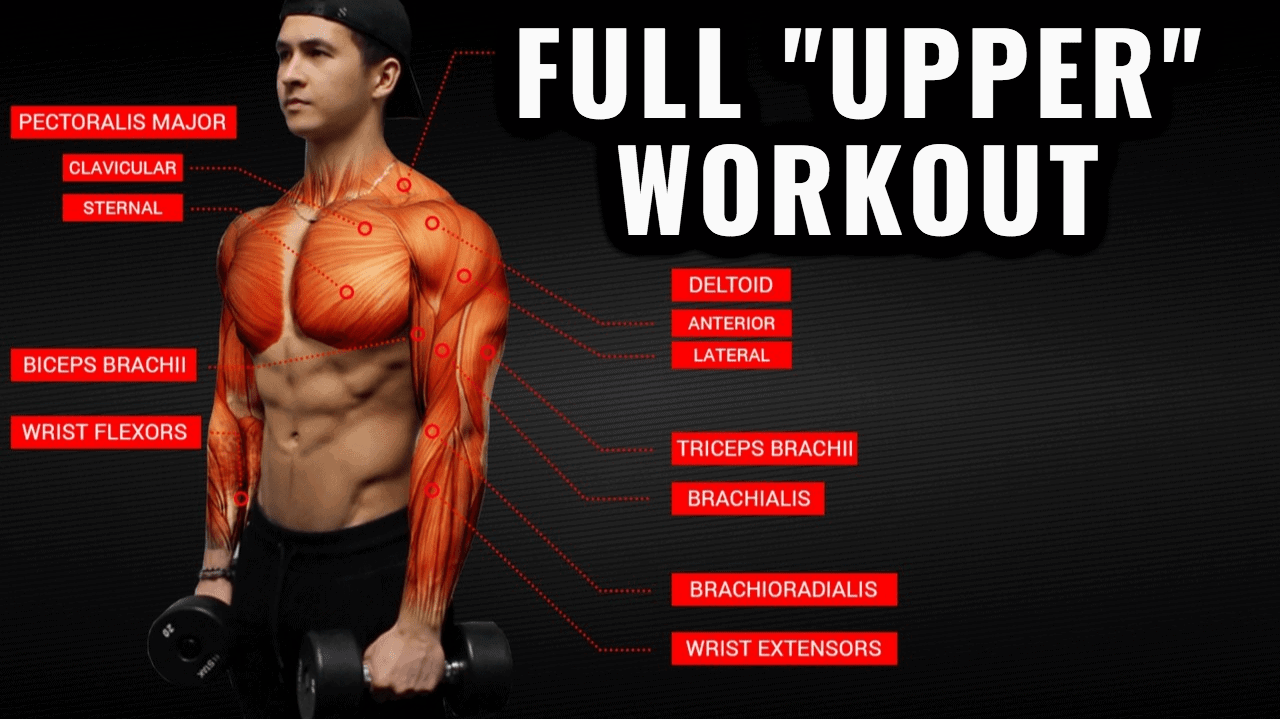
Avoiding injury while building a Herculean upper body is paramount. It’s far more satisfying to steadily increase your strength than to spend weeks sidelined with a tweaked bicep or a grumpy shoulder. Proper form is the cornerstone of injury prevention, and understanding the nuances of each exercise is crucial. A little knowledge can save you a lot of pain (and possibly a trip to the chiropractor!).Proper form isn’t just about looking good; it’s about maximizing muscle activation and minimizing the risk of injury.
By focusing on precise movements and engaging the correct muscles, you’ll not only build strength more effectively, but you’ll also protect your joints and ligaments from undue stress. Think of it as fine-tuning your body’s engine for peak performance – with a warranty against breakdowns.
Bench Press
The bench press, a king among compound exercises, requires meticulous attention to detail. Lie supine on the bench with your feet flat on the floor, gripping the bar slightly wider than shoulder-width apart. Lower the bar to your chest, touching it lightly, ensuring your elbows are slightly flared out (not tucked in). Maintain a stable, controlled descent and push the bar back up to the starting position, focusing on squeezing your chest muscles at the top.
So you want biceps like boulders and a chest that could crack walnuts? Mastering the bench press, overhead press, and rows is key for most effective weight training exercises for building upper body strength. But if you’re past the newbie stage, you’ll need a more strategic approach. Check out this advanced weight training program for experienced lifters to increase strength to really push your limits.
Then, you can return to those fundamental exercises with newfound power and precision, building even more upper body strength!
Common mistakes include arching your back excessively (which can strain your lower back), letting the bar bounce off your chest, and not fully extending your arms at the top of the movement. These errors can lead to shoulder impingement, pectoral tears, and lower back pain.
Overhead Press
When performing the overhead press, stand with your feet shoulder-width apart, gripping the bar slightly wider than shoulder-width. Maintain a straight back and engage your core. Lower the bar to your upper chest, then press it overhead, fully extending your arms. Avoid arching your back or leaning excessively, which can place undue stress on your spine. A common mistake is using momentum to lift the weight, which can lead to shoulder injuries.
Instead, focus on controlled movements and a smooth, steady rhythm.
Bent-Over Rows
For bent-over rows, hinge at your hips, maintaining a straight back, and keeping your core engaged. Grip the bar with an overhand grip, slightly wider than shoulder-width apart. Pull the bar towards your lower chest, keeping your elbows close to your body. Avoid rounding your back, which can lead to lower back pain. A common mistake is using your back muscles too much instead of your lats and biceps, potentially causing back injuries.
Focus on controlled movements and maintain a neutral spine.
Bicep Curls
During bicep curls, stand with your feet shoulder-width apart, holding a dumbbell in each hand. Keep your elbows close to your sides and curl the dumbbells up towards your shoulders, focusing on squeezing your biceps at the top. Avoid using momentum or swinging your arms, which can reduce the effectiveness of the exercise and increase your risk of injury.
A common mistake is swinging the weights, using momentum instead of muscle power, which can strain your elbows and shoulders.
Triceps Extensions
For triceps extensions, hold a dumbbell overhead with both hands. Lower the dumbbell behind your head by bending your elbows, keeping them close to your ears. Extend your arms back up to the starting position, focusing on squeezing your triceps at the top. Avoid locking your elbows, which can put undue stress on the joint. A common mistake is locking out your elbows, which can lead to elbow pain.
Warm-up and Cool-down Routines
A proper warm-up is essential to prepare your muscles and joints for the workout. Start with 5-10 minutes of light cardio, followed by dynamic stretching, such as arm circles and torso twists. This increases blood flow to the muscles and improves flexibility, reducing the risk of injury. A cool-down is equally important. It helps to gradually reduce your heart rate and promote muscle recovery.
Include static stretches, holding each stretch for 20-30 seconds, focusing on the major muscle groups worked during the workout. This helps to prevent muscle soreness and stiffness. Neglecting warm-up and cool-down routines increases the likelihood of muscle strains, tears, and other injuries. Think of it like preparing your car for a long journey – a proper warm-up and cool-down extends the life of your engine (your body!).
So you want guns like Schwarzenegger? Forget flimsy bicep curls; bench presses, overhead presses, and rows are your best friends for building serious upper body strength. But knowing which exercises to prioritize is only half the battle; to truly maximize your gains, you need a solid plan, and that’s where learning how to create a personalized weightlifting plan for strength and muscle growth comes in.
Once you’ve got that dialed in, you can really focus on perfecting your form for those killer upper body exercises.
Nutrition and Recovery for Upper Body Strength Gains
Building serious upper body strength isn’t just about grunting and groaning in the gym; it’s a carefully orchestrated symphony of sweat, iron, and – crucially – proper nutrition and recovery. Think of your muscles as high-performance engines: they need the right fuel to perform optimally and the downtime to rebuild and become even stronger. Neglecting these aspects is like trying to win a Formula 1 race on flat tires.Proper nutrition and recovery are essential components for maximizing upper body strength gains.
Without sufficient protein to repair muscle tissue and adequate rest to allow for muscle growth, your efforts in the gym will yield significantly diminished results. Think of it as trying to build a skyscraper with only half the bricks – it’s not going to happen.
Protein Intake and Muscle Growth
Protein is the undisputed king of muscle building. It’s the raw material your body uses to repair microscopic tears in muscle fibers caused by weight training, allowing them to grow back bigger and stronger. A general guideline is to aim for around 1.6 to 2.2 grams of protein per kilogram of body weight daily, especially when actively engaging in intense upper body strength training.
For example, a 70kg individual should consume between 112 and 154 grams of protein per day. This isn’t about becoming a protein-obsessed cyborg; it’s about providing your body with the building blocks it needs to achieve your fitness goals. Deficiencies in protein intake can lead to slower muscle recovery and hinder strength gains, resulting in a frustrating plateau.
The Importance of Sleep and Rest
While you’re crushing those bench presses, your muscles aren’t actually getting strongerduring* the workout. The real magic happens during recovery. Sleep is when your body releases growth hormone, a crucial player in muscle repair and growth. Aim for 7-9 hours of quality sleep per night. Think of sleep as the ultimate muscle-building supplement, and it’s completely free! Insufficient sleep compromises muscle protein synthesis, increases cortisol (a stress hormone that can hinder muscle growth), and generally leaves you feeling sluggish and less capable of pushing yourself during your workouts.
This is not a recipe for gaining strength!
Sample High-Protein Meal Plan
A well-structured meal plan is crucial for supplying your body with the protein it needs to rebuild and grow stronger. Here’s a sample meal plan emphasizing protein-rich foods to support your upper body strength training. Remember to adjust portion sizes based on your individual caloric needs and activity levels.
- Breakfast: Oatmeal with berries and a scoop of whey protein powder, alongside 3 whole eggs.
- Mid-morning snack: Greek yogurt with a handful of almonds.
- Lunch: Grilled chicken salad with mixed greens, avocado, and a light vinaigrette.
- Afternoon snack: Protein shake with a banana.
- Dinner: Lean beef stir-fry with brown rice and plenty of vegetables.
- Before bed snack: Casein protein shake (a slow-digesting protein to support overnight muscle recovery).
Remember, this is just a sample. You can adapt it to fit your preferences and dietary needs. The key is to consistently consume sufficient protein throughout the day to optimize muscle recovery and growth. Prioritizing whole, unprocessed foods is also essential for overall health and well-being, supporting your strength-building journey.
Outcome Summary
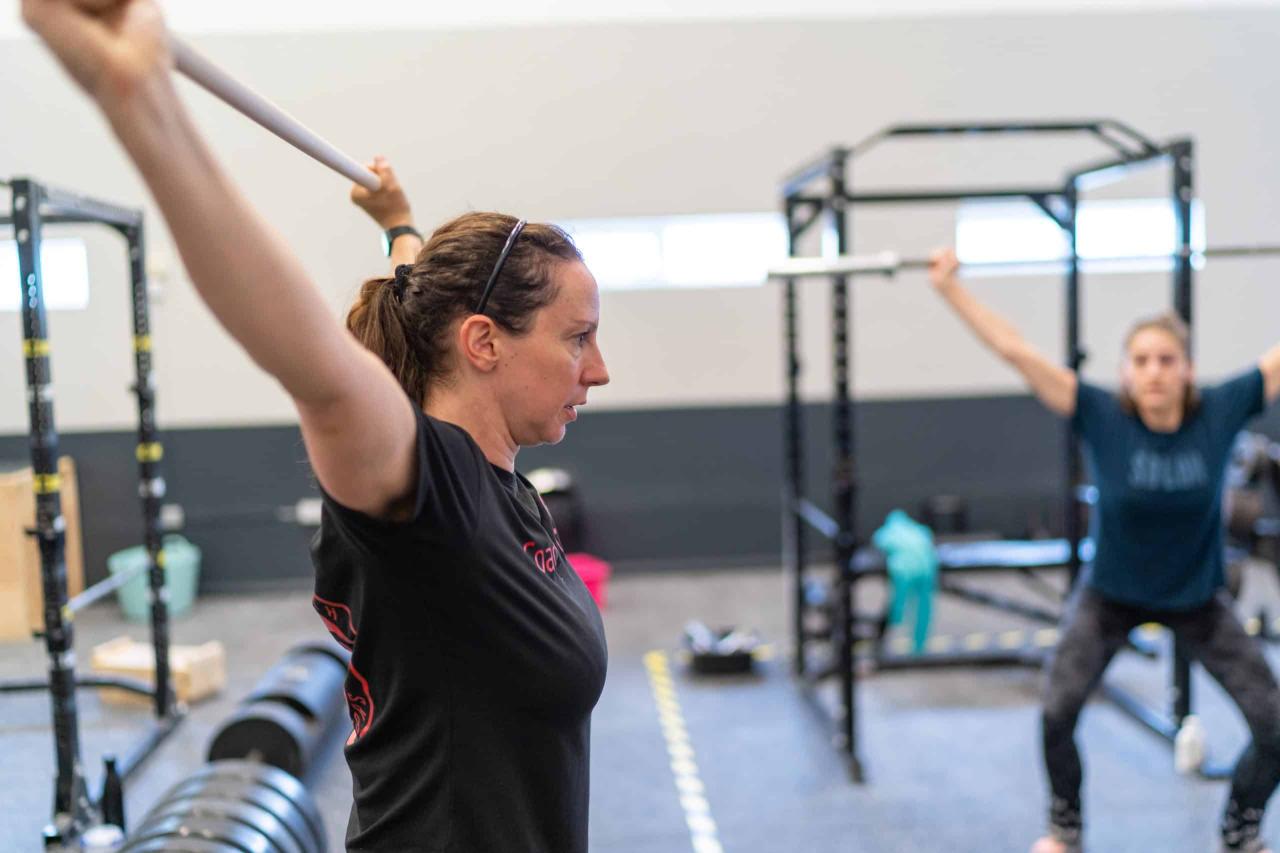
So, there you have it: your roadmap to upper body dominance. Remember, consistency and proper form are key. Don’t rush the process; enjoy the journey of building strength and watching your physique evolve. Embrace the challenge, conquer the weights, and prepare to unleash your inner superhero (or super-villain, if that’s your style!). Now go forth and lift!
